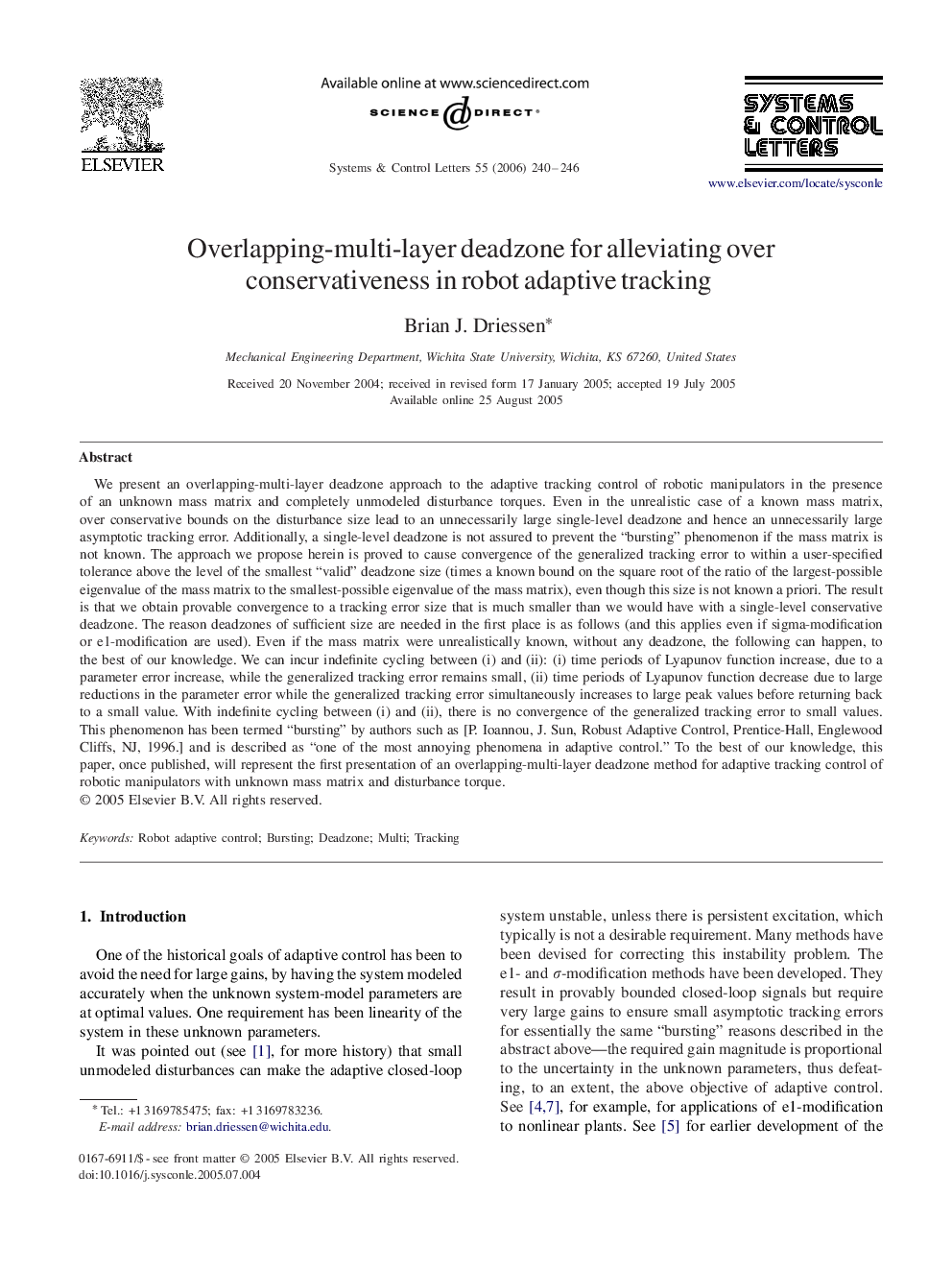| کد مقاله | کد نشریه | سال انتشار | مقاله انگلیسی | نسخه تمام متن |
|---|---|---|---|---|
| 756773 | 896221 | 2006 | 7 صفحه PDF | دانلود رایگان |
عنوان انگلیسی مقاله ISI
Overlapping-multi-layer deadzone for alleviating over conservativeness in robot adaptive tracking
دانلود مقاله + سفارش ترجمه
دانلود مقاله ISI انگلیسی
رایگان برای ایرانیان
موضوعات مرتبط
مهندسی و علوم پایه
سایر رشته های مهندسی
کنترل و سیستم های مهندسی
پیش نمایش صفحه اول مقاله

چکیده انگلیسی
We present an overlapping-multi-layer deadzone approach to the adaptive tracking control of robotic manipulators in the presence of an unknown mass matrix and completely unmodeled disturbance torques. Even in the unrealistic case of a known mass matrix, over conservative bounds on the disturbance size lead to an unnecessarily large single-level deadzone and hence an unnecessarily large asymptotic tracking error. Additionally, a single-level deadzone is not assured to prevent the “bursting” phenomenon if the mass matrix is not known. The approach we propose herein is proved to cause convergence of the generalized tracking error to within a user-specified tolerance above the level of the smallest “valid” deadzone size (times a known bound on the square root of the ratio of the largest-possible eigenvalue of the mass matrix to the smallest-possible eigenvalue of the mass matrix), even though this size is not known a priori. The result is that we obtain provable convergence to a tracking error size that is much smaller than we would have with a single-level conservative deadzone. The reason deadzones of sufficient size are needed in the first place is as follows (and this applies even if sigma-modification or e1-modification are used). Even if the mass matrix were unrealistically known, without any deadzone, the following can happen, to the best of our knowledge. We can incur indefinite cycling between (i) and (ii): (i) time periods of Lyapunov function increase, due to a parameter error increase, while the generalized tracking error remains small, (ii) time periods of Lyapunov function decrease due to large reductions in the parameter error while the generalized tracking error simultaneously increases to large peak values before returning back to a small value. With indefinite cycling between (i) and (ii), there is no convergence of the generalized tracking error to small values. This phenomenon has been termed “bursting” by authors such as [P. Ioannou, J. Sun, Robust Adaptive Control, Prentice-Hall, Englewood Cliffs, NJ, 1996.] and is described as “one of the most annoying phenomena in adaptive control.” To the best of our knowledge, this paper, once published, will represent the first presentation of an overlapping-multi-layer deadzone method for adaptive tracking control of robotic manipulators with unknown mass matrix and disturbance torque.
ناشر
Database: Elsevier - ScienceDirect (ساینس دایرکت)
Journal: Systems & Control Letters - Volume 55, Issue 3, March 2006, Pages 240-246
Journal: Systems & Control Letters - Volume 55, Issue 3, March 2006, Pages 240-246
نویسندگان
Brian J. Driessen,